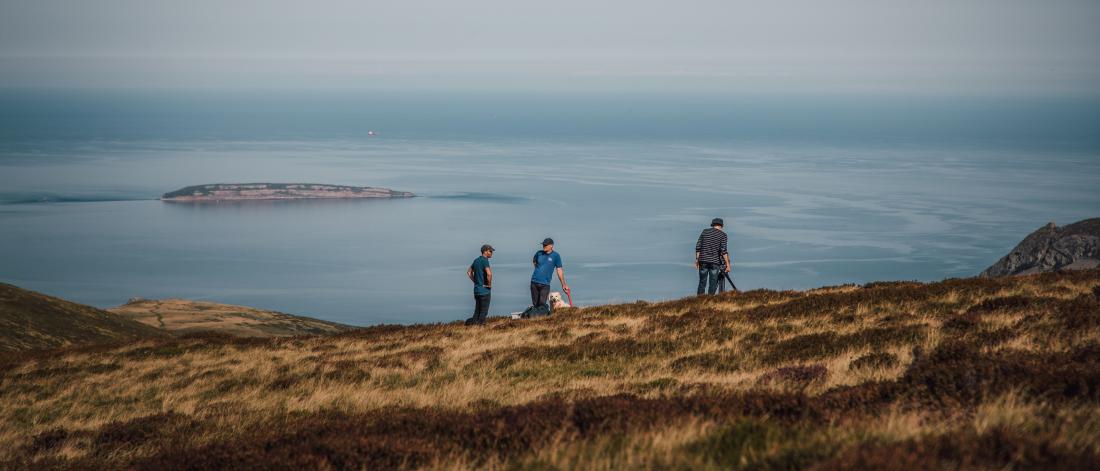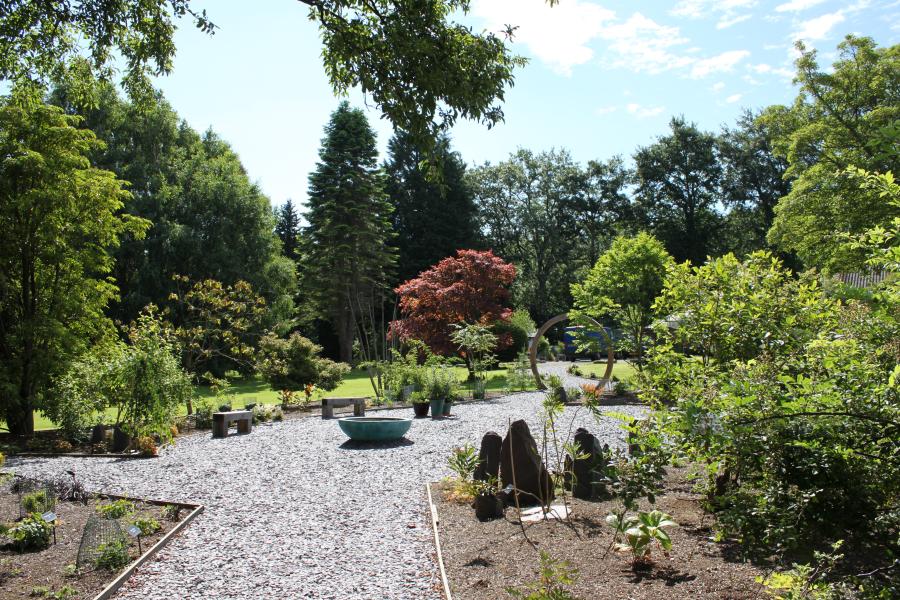Treborth Botanic Garden
Treborth Botanic Garden, covers an area of 18 hectares on the shores of the Menai Strait and has been owned by Bangor University since 1960. Whilst being freely open to the public, Treborth is used for some of the research and teaching activities of the School of Biological Sciences and the School of Environment, Natural Resources and Geography.
Treborth is home to seven glasshouses, including a large landscaped tropical house, Europe's largest underground root laboratory (the rhizotron), a teaching laboratory, formal garden beds, a rock garden, an arboretum and a conservation collection. The new Coast Path for Wales runs through the Garden and attracts over 100,000 visitors per year alongside frequent visits from local schools and special interest groups.
Analytical facilities
The Environment Centre Wales (ECW) is a partnership venture between the Natural Environment Research Council’s Centre for Ecology & Hydrology (CEH) and Bangor University. ECW provides a modern research facility for a mix of scientists from atmosphere, land, freshwater and marine disciplines to deliver integrated science within a green iconic building which mirrors our research focus on environmental issues.
The Ecosystems and Environment Group (EEG) was formed to bring together scientific expertise both from within and from outside the university, in the areas of carbon, nutrient and contaminant flow within and between ecosystems.
We operate a suite of laboratories on the second floor of the ECW building. This suite includes a radio and stable isotope lab, a Category 2 pathogen lab, a darkened microscope room, sample preparation laboratories and a dedicated analytical instrument lab. Within the labs we house the following range of analytical instruments and facilities:
- Ankom Fibre Analyser
- Atlas Suntest CPS
- Autoclave
- Biological Safety Cabinets
- Centrifuges
- Fluorescence and Binocular Microscopes
- Fluorescence spectrophotometer
- Growth Cabinets
- Incubators and Ovens
- Leco CN Analyser
- MicroBeta Luminescence Counter
- Micro Oxymax Respirometer
- Muffle Furnace
- Respirometer (CO2 Analyser)
- Seward Stomacher 400 Circulator
- Shakers
- Tecan Infinite 200 Pro Multi-plate Reader
- TOC Tnb Elemental Analyser
- TXRF Elemental Analyser
- Varian GC FID ECD
- Varian GC MS
- Varian HPLC
- Wallac Scintillation Counter
Additional equipment relating to wood processing and production of plant fibre-based composites is available in the BioComposites Centre. Staff also have access to a range of new equipment for plant and environmental science research in Biological Sciences and Chemistry. These include facilities for genomics, proteomics and metabolomics, microscopy and imaging, cell probes and a botanic garden.
Desk-Based Facilities
The Centre for Evidence-Based Conservation (CEBC) was established in 2003 with the goal of supporting decision making in conservation and environmental management. CEBC promotes evidence-based practice through the production and dissemination of systematic reviews on both the effectiveness of management and policy interventions and on the impact of human activities on the natural environment.
Long-term experiment sites
We have a number of sites which are monitored on a long-term basis and provide opportunities for research and project work. More information.


